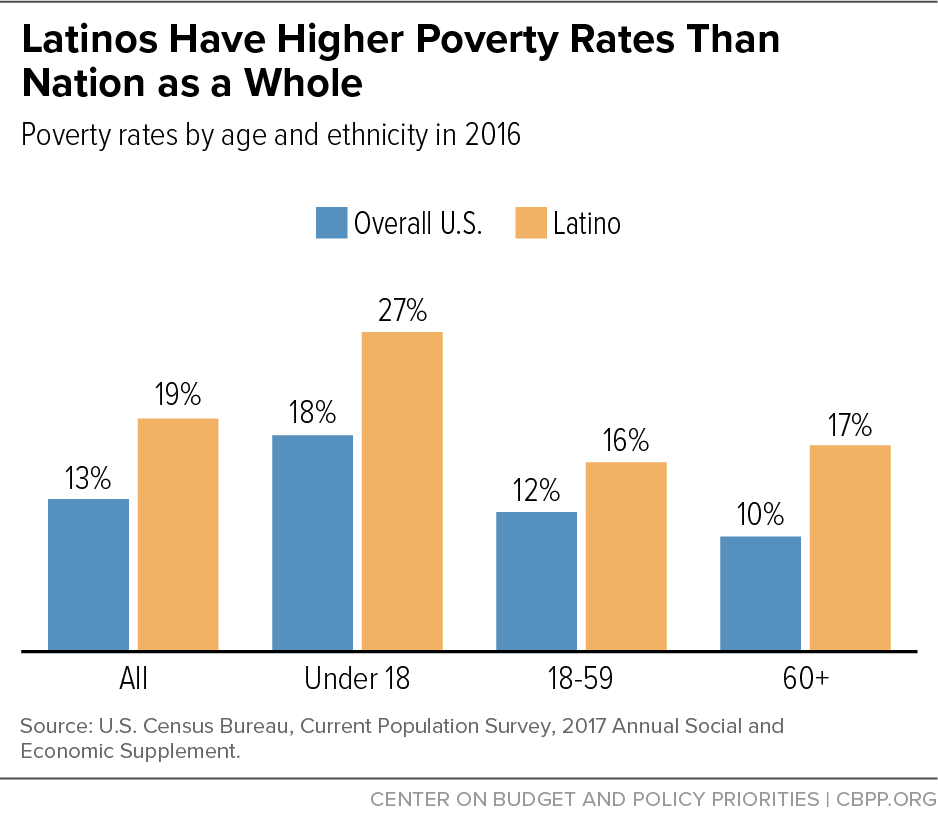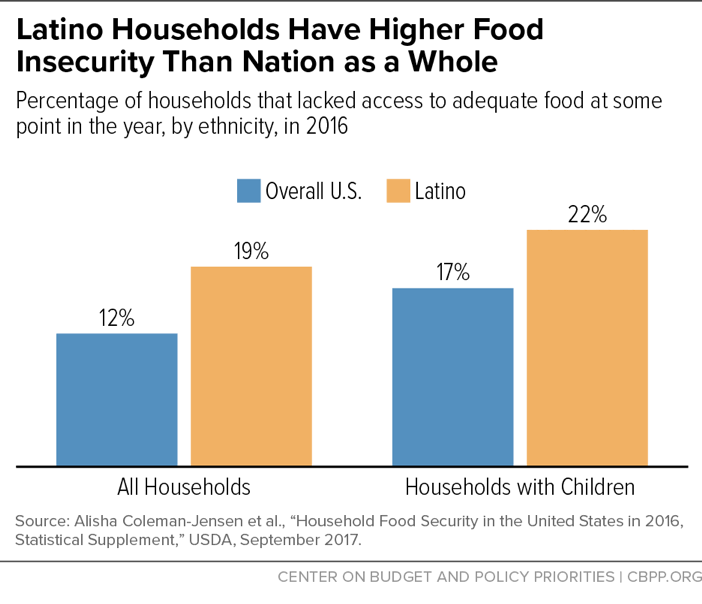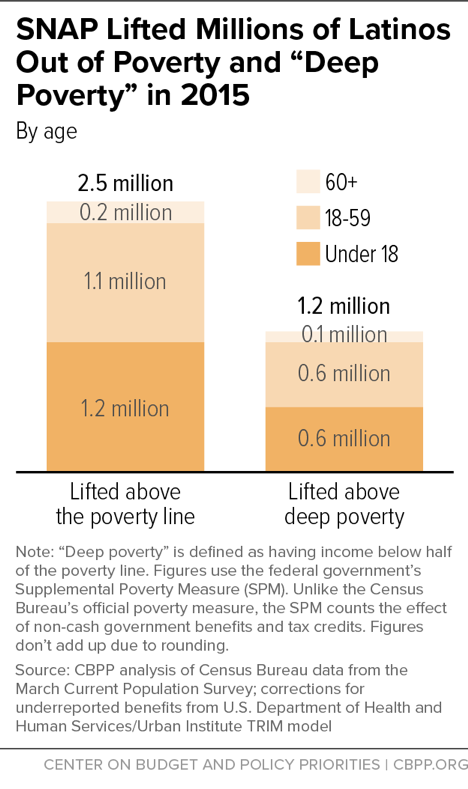SNAP Helps Millions of Latinos
End Notes
[1] Latinos refers to an ethnicity and may include individuals of any race.
[2] U.S. Census Bureau, Current Population Survey, 2017 Annual Social and Economic Supplement.
[3] Alisha Coleman-Jensen et al., “Household Food Security in the United States in 2016, Statistical Supplement,” USDA, September 2017, https://www.ers.usda.gov/webdocs/publications/84973/err-237.pdf.
[4] The source for these data is the U.S. Agriculture Department’s fiscal year 2016 SNAP Households Characteristic data. Reporting of race/ethnicity is voluntary and is missing for 15.5 percent of SNAP participants. Some 7.5 million SNAP participants self-identified or were coded by an eligibility worker as “Latino or Hispanic.” They represented about 17 percent of all SNAP participants. The cases with missing race/ethnicity information are concentrated in 23 states. For example, Tennessee, Texas, and Washington each were missing the data for more than two-thirds of SNAP individuals. As a result, we relied on another data source, the March 2017 Current Population Survey, to estimate that another 2 million Latinos, 5 percent of all SNAP participants, should have been included as Latino.
[5] CBPP analysis of Census Bureau data from the March Current Population Survey; corrections for underreported benefits from U.S. Department of Health and Human Services/Urban Institute TRIM model.
[6] U.S. Census Bureau, Annual Estimates of the Resident Population as of July 1, 2016.
[7] A Latino household is defined as a household with at least one Latino SNAP participant. About $13 billion, 19 percent of total SNAP benefits, was issued to Latino households based on the U.S. Agriculture Department’s fiscal year 2016 SNAP Households Characteristic data. Due to missing race/ethnicity data discussed above, we estimate that an additional $3 billion was issued to Latino households that did not report race/ethnicity data.


